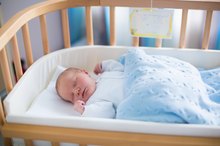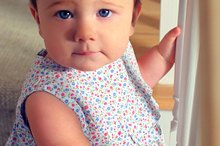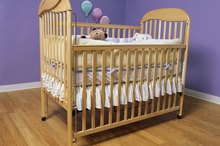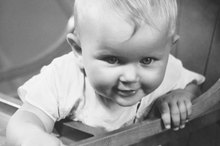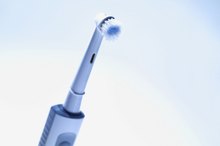Crib Slat Safety
Baby cribs are responsible for more deaths than any other nursery item, warns the U.S. Consumer Product Safety Commission. The slats, or vertical bars, of your baby’s crib are responsible for containing your baby and preventing serious falls out of bed. Ironically, crib slats can also pose a significant safety hazard if they lack the correct spacing or if they are not in good condition.
Safety Issues
Crib slats should be no more than 2 3/8 inches apart to prevent a baby’s head or body from getting stuck between the slats, according to requirements set by the U.S. Consumer Product Safety Commission. Older cribs or those with broken or loose slats, may not meet this requirement. Deaths involving loose, widely spaced or missing slats have been reported. Older crib slats may also have lead paint, which can be harmful if ingested. In addition, splinters or rough spots could harm a baby.
- Crib slats should be no more than 2 3/8 inches apart to prevent a baby’s head or body from getting stuck between the slats, according to requirements set by the U.S. Consumer Product Safety Commission.
- Older cribs or those with broken or loose slats, may not meet this requirement.
Safety Measures
Crib Age Safety
Learn More
Before you allow your baby to sleep in a crib, make sure no slats are missing or loose. Make sure the slats are not too far apart. If you can easily fit a soda can through the slats, the crib is not safe, warns the Consumer Product Safety Commission. Inspect the slats for peeling paint, splinters and sharp edges. Be sure the mattress fits snugly so your baby’s head cannot get trapped. The person who assembles the crib should closely follow directions and use all hardware and parts.
- Before you allow your baby to sleep in a crib, make sure no slats are missing or loose.
Misconceptions
Parents often use crib bumper pads, soft pads that attach to crib slats, to keep a baby from bumping into the hard slats 1. Although bumper pads are widely used and commonly sold with baby bedding, the American Academy of Pediatrics warns parents to consider the risks. A baby can suffocate when soft objects, including crib bumpers, are placed in his crib. Babies can bury their faces in bumper pads, get caught between the pads and crib slats or be strangled by ties used to attach the pads to the slats. It is extremely unlikely for a baby to become seriously injured while bumping against the side of the crib, according to the American Academy of Pediatrics, so parents should weigh the risks and benefits before using crib bumpers 1.
Considerations
Safety Issues in Children's Clothing
Learn More
If you see a Juvenile Products Manufacturers Association seal on a new crib, it means an independent laboratory has tested it to ensure it meets all safety standards. Check for this seal when you purchase a new crib. After your purchase, return the product registration card so you will be notified in the event of a recall. You can also visit the U.S. Consumer Product Safety Commission website for recall information or to report a problem with a crib.
- If you see a Juvenile Products Manufacturers Association seal on a new crib, it means an independent laboratory has tested it to ensure it meets all safety standards.
- Check for this seal when you purchase a new crib.
Warning
Be careful if you purchase or accept a used crib, especially if it does not come with information about the age or manufacturer. If you have to use such a crib, carefully inspect it for problems and measure the slats. If possible, call the manufacturer of a used crib to make sure there have been no problems or recalls.
Related Articles
References
Resources
Writer Bio
Shannon Cotton is a freelance writer covering a variety of topics, including parenting, health and lifestyle. After nine years of writing for a weekly newspaper, she took her love of writing to the Web. Cotton attended Tarleton State University and received her bachelor’s degree in 2003.
